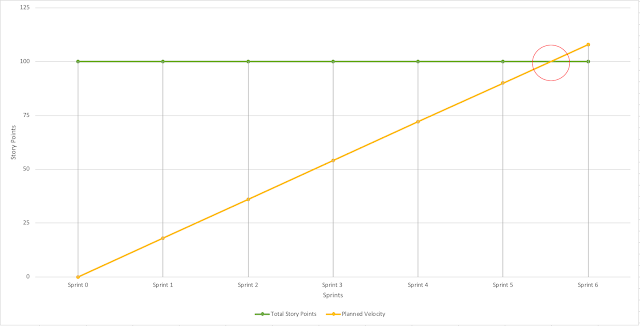Agile estimation and how to... (part 2 of 2)
So we left off in the previous post on "How do we take estimates and turn them into a projected timeline?"
Now that you have identified the total scope of a project and the estimated story points it’s now time to identify how long it will take your team to achieve the goal.
We do this by using what is called velocity. This is a metric for work done, usually used for planning and measuring team performance.
Usually product owners (PO) would like to see a total view of a project so even the blue sky scenarios and not just Minimum viable product (MVP) can be used in your estimates and timelines.
There are a few methods to do this but recently I have been using the three round velocity estimation game and this is usually done with new teams. If you already have a well established team then you would apply your current average velocity.
To do this have your story map in front of you and as a team get your product owner to ask for the commitments of each developer for the first sprint (two weeks) of the project.
The team members will one by one take the cards off the story map and present these to the PO, this is repeated for three fake sprints. For example a combines effort would be:
Round 1 – 13 Total story points
Round 2 – 24 Total story points
Round 3 – 17 Total story points
Total = 54 Story points
Then divide the total by three sprints 54/3 = 18 story point velocity
If you have 100 story points for example for the overall project, then it will take an estimated 5.5 sprints (11 weeks) to deliver this piece of work with no contingency added as per the image below showing this on a timeline.
You can now use these values to drive conversations with your stakeholders, plan your first development sprint with your team or provide a difference between overall project time vs. an MVP.
Now that you have identified the total scope of a project and the estimated story points it’s now time to identify how long it will take your team to achieve the goal.
We do this by using what is called velocity. This is a metric for work done, usually used for planning and measuring team performance.
Usually product owners (PO) would like to see a total view of a project so even the blue sky scenarios and not just Minimum viable product (MVP) can be used in your estimates and timelines.
There are a few methods to do this but recently I have been using the three round velocity estimation game and this is usually done with new teams. If you already have a well established team then you would apply your current average velocity.
To do this have your story map in front of you and as a team get your product owner to ask for the commitments of each developer for the first sprint (two weeks) of the project.
The team members will one by one take the cards off the story map and present these to the PO, this is repeated for three fake sprints. For example a combines effort would be:
Round 1 – 13 Total story points
Round 2 – 24 Total story points
Round 3 – 17 Total story points
Total = 54 Story points
Then divide the total by three sprints 54/3 = 18 story point velocity
If you have 100 story points for example for the overall project, then it will take an estimated 5.5 sprints (11 weeks) to deliver this piece of work with no contingency added as per the image below showing this on a timeline.
You can now use these values to drive conversations with your stakeholders, plan your first development sprint with your team or provide a difference between overall project time vs. an MVP.
